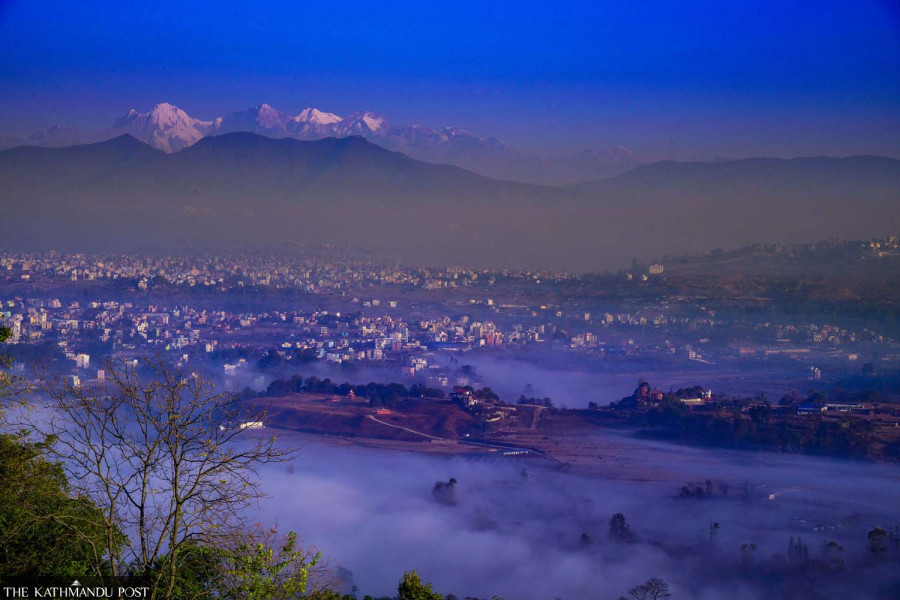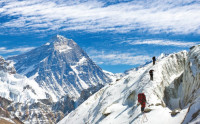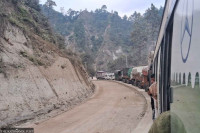Editorial
Elephant in the room
Before blaming other countries for foul air, we in Nepal should look to clean up our own act.
Long gone are the smog-free winter days. As soon as the temperatures dip, the bowl-shaped topography of Kathmandu Valley traps pollutants in the atmosphere, making its air one of the most toxic in the world. The problem is not limited to the federal capital and its periphery though, as other cities and districts in the country also fare poorly in this regard. All of Nepal’s 30.7 million people now live in areas where the annual average particulate pollution level exceeds the WHO guideline of 5 micrograms per cubic metre. This has cut the life expectancy of Nepalis by nearly five years, as reported by the Air Quality Life Index (AQLI) issued by the Energy Policy Institute of the University of Chicago.
Though illegal, the practices of stubble burning in the fields, and open-waste or plastic burning in the backyards of houses, street corners and even public spaces, are widespread. Moreover, construction works on roads and sidewalks that linger for months or years result in much dust and dirt, while contractors often show little urgency to meet the deadlines. Little do people consider that their small part, when extrapolated across a large population, is making the air unbreathable and destroying their health. The systemic neglect of authorities is also exacerbating the air pollution crisis.
Breathing in unhealthy air has multiple health consequences. Health workers warn that exposure to foul air can in the short term lead to pneumonia, bronchitis, conjunctivitis, skin allergy, stroke and heart problems. Over time, it can cause severe conditions such as ulcers, lung and intestine cancer, kidney diseases and heart complications. Since the start of the dry season this year, hospitals in the Valley have witnessed a steady rise in the number of patients—mostly children and elderly—with respiratory illnesses. A recent Nepal Health Research Council study shows that children in Kathmandu Valley are particularly vulnerable to air pollution due to their exposure while commuting to and from schools.
In response, the Ministry of Forests and Environment has recently asked people to focus on maintaining their vehicles, using clean energy, controlling smoke and dust coming from roads and construction work, and refraining from burning plastic. But such directives are more often ignored than they are heeded, by both the public and authorities. While sprinkling water on roads and sweeping the dust can keep our surroundings clean, these activities are no solutions to the problem of air pollution. Worryingly, promoting clean energy, including in our kitchens, doesn’t seem to be a priority of our political leaders and authorities. Experts also often point to lack of coordination between different agencies to tackle air pollution. We thus need a complete overhaul of the way we manage air pollution.
Lasting solutions will emerge only through greater collaboration, for instance, between the local units, and the ministries of transport, health and population and urban development. Local authorities can control open burning through stringent rules and monitoring; the transport ministry too could get serious about phasing out old vehicles that emit pollutants. While pollution from cities in northern India has also been identified as a contributor to poor air quality in Nepali border towns and the capital city of Kathmandu, perhaps the locally generated pollutants are an even bigger threat. If we fail to do our bit to clean our own air, we also lose the moral ground to point fingers at other countries. With the right policies, programmes and mindset, the air we breathe would be a lot healthier.




 5.14°C Kathmandu
5.14°C Kathmandu














